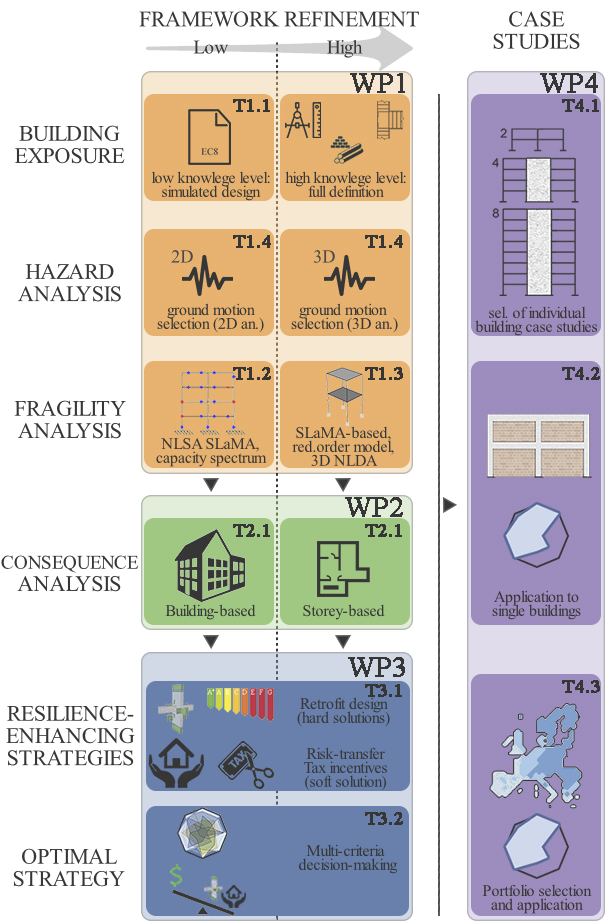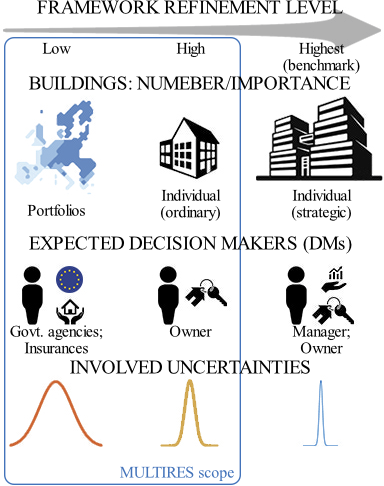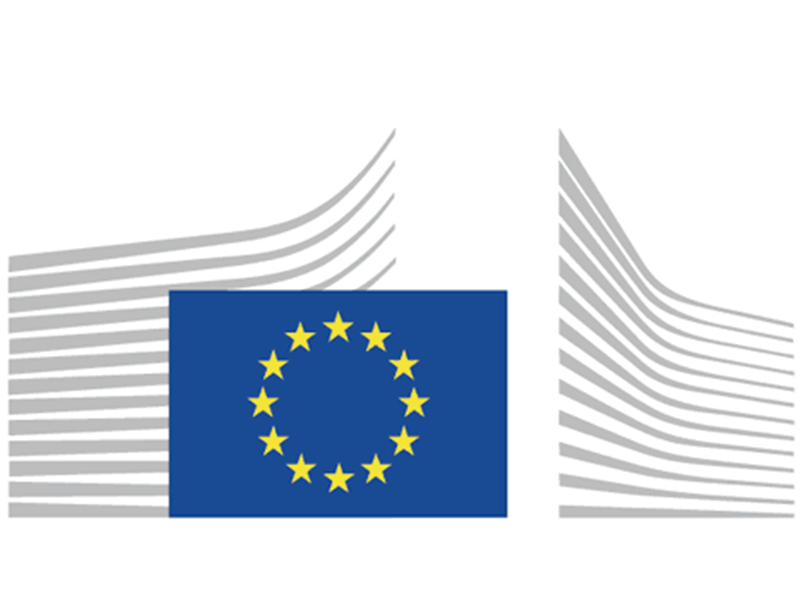MULTIRES: MULTI-level framework to enhance seismic RESilience of RC buildings
Overview of the project
MULTIRES aims to develop an advanced, harmonised, multi-level framework to assess earthquake risk of existing Reinforced Concrete (RC) buildings in earthquake-prone regions and to design/select practice-oriented, cost-effective, seismic resilience-enhancing solutions (e.g. structural retrofit, risk-transfer products).
The framework will benefit several seismic-prone countries (e.g. Greece, Italy, Romania), for which most of the existing buildings are designed according to pre-seismic codes and where, RC buildings represent the highest share from 1960s onwards (e.g. 48% in Italy). Two levels of analysis refinement will be considered, single buildings vs. building portfolios, specifically tailored to the expected needs/goals of different stakeholders: building owners and government agencies/(re)insurance companies. A coherent treatment of risk and uncertainty in each project’s task will promote dynamic and informed decision-making aiming at seismic resilience.


MULTIRES builds on probabilistic catastrophe risk modelling and seismic performance assessment of existing RC building grounds. State of the art/practice is advanced providing flexible analysis methods for fragility and vulnerability assessment and their implementation tools.
Through world-leading research training and co-development, the project contributes to create a holistic culture of risk awareness and resilience in Europe, reflecting a strong commitment to the Sendai Framework for Disaster Risk Reduction.
Output International Journal Papers
- Gentile, and Galasso. (2021). Surrogate Probabilistic Seismic Demand Modelling of Inelastic SDoF Systems for Efficient Earthquake Risk Applications. Earthquake Engineering & Structural Dynamics in press.
- Gentile, Pampanin, and Galasso. (2021). A Computational Framework for Selecting the Optimal Combination of Seismic Retrofit and Insurance Coverage. Computer-Aided Civil and Infrastructure Engineering in press (October). https://doi.org/10.1111/mice.12778.
- Nettis, Gentile, Raffaele, Uva, and Galasso. (2021). Cloud Capacity Spectrum Method: Accounting for Record-to-Record Variability in Fragility Analysis Using Nonlinear Static Procedures. Soil Dynamics and Earthquake Engineering 150 (November): 106829. https://doi.org/10.1016/j.soildyn.2021.106829.
- Sevieri, Gentile, and Galasso. (2021). A Multi-Fidelity Bayesian Framework for Robust Seismic Fragility Assessment. Earthquake Engineering & Structural Dynamics accepted. https://doi.org/10.1002/eqe.3552.
- Freddi, Novelli, Gentile, Veliu, Andreev, Andonov, Greco, and Zhuleku. (2021). Observations from the 26th November 2019 Albania Earthquake: The Earthquake Engineering Field Investigation Team (EEFIT) Mission. Bulletin of Earthquake Engineering 19 (7): 2993–94.
- Gentile, and Galasso. (2021). Simplicity versus Accuracy Trade-off in Estimating Seismic Fragility of Existing Reinforced Concrete Buildings. Soil Dynamics and Earthquake Engineering 144 (May): 106678. https://doi.org/10.1016/j.soildyn.2021.106678.
- Gentile, and Galasso. (2021). Hysteretic Energy‐based State‐dependent Fragility for Ground‐motion Sequences. Earthquake Engineering & Structural Dynamics 50 (4): 1187–1203. https://doi.org/10.1002/eqe.3387.
- Gentile, and Galasso. (2020). Simplified Seismic Loss Assessment for Optimal Structural Retrofit of RC Buildings [Open Access]. Earthquake Spectra 37 (1). https://doi.org/10.1177/8755293020952441.
- Aljawhari, Gentile, Freddi, and Galasso. (2020). Effects of Ground-Motion Sequences on Fragility and Vulnerability of Case-Study Reinforced Concrete Frames [Open Access]. Bulletin of Earthquake Engineering in press. https://doi.org/https://doi.org/10.1007/s10518-020-01006-8.
- Gentile, Nettis, and Raffaele. (2020). Effectiveness of the Displacement-Based Seismic Performance Assessment for Continuous RC Bridges and Proposed Extensions. Engineering Structures 221. https://doi.org/10.1016/j.engstruct.2020.110910.
- Gentile, Galasso, and Pampanin. (2020). Material-Property Uncertainties versus Structural Detailing: Relative Effect on the Seismic Fragility of Reinforced Concrete Frames. Journal of Structural Engineering 147 (4). https://doi.org/10.1061/(ASCE)ST.1943-541X.0002917.
- Gentile, and Galasso. (2020). Accounting for Directivity-Induced Pulse-like Ground Motions in Building Portfolio Loss Assessment [Open Access]. Bulletin of Earthquake Engineering in press. https://doi.org/10.1007/s10518-020-00950-9.
- Gentile, and Galasso. (2020). Gaussian Process Regression for Seismic Fragility Assessment of Building Portfolios. Structural Safety 87 (101980). https://doi.org/10.1016/j.strusafe.2020.101980.
Funding
This study has been funded from the European Union’s Horizon 2020 research and innovation programme under grant agreement No. 843794 (Marie Skłodowska-Curie Research Grants Scheme MSCA–IF–2018: MULTIRES, MULTI-level framework to enhance seismic RESilience of RC buildings).